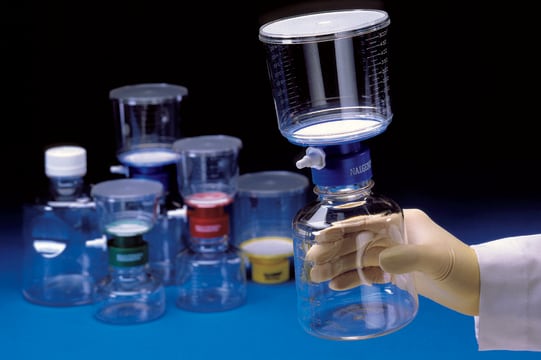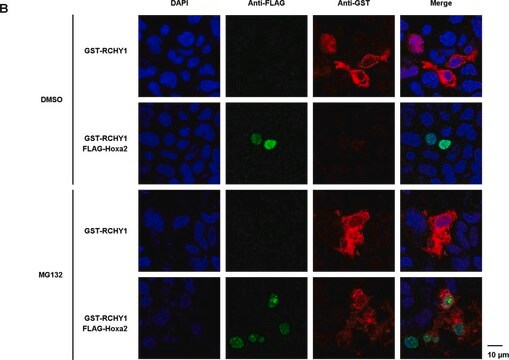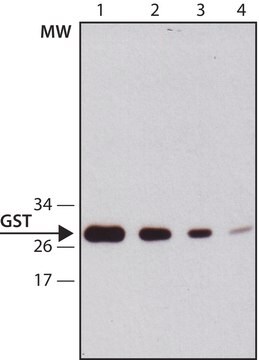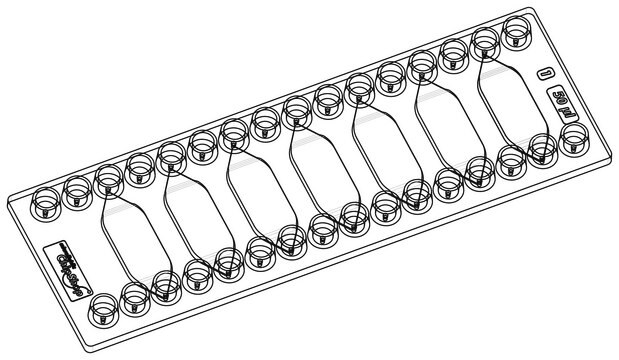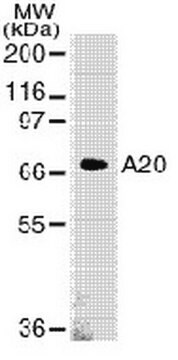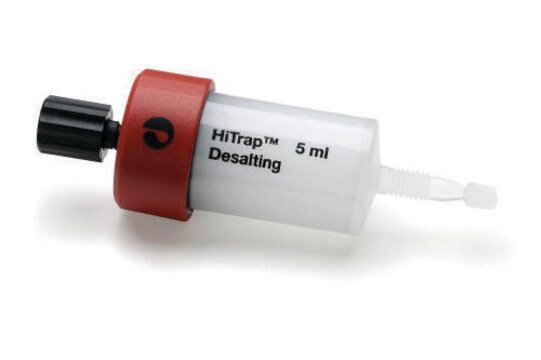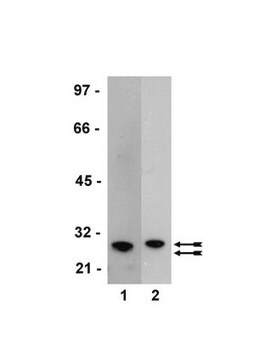AB3282
Anti-Glutathione-S-Transferase Antibody, S. japonicum form
Chemicon®, from rabbit
Sinonimo/i:
GST-tag
About This Item
Prodotti consigliati
Origine biologica
rabbit
Livello qualitativo
Forma dell’anticorpo
purified antibody
Tipo di anticorpo
primary antibodies
Clone
polyclonal
Reattività contro le specie
Schistosoma japonicum, vertebrates
Produttore/marchio commerciale
Chemicon®
tecniche
ELISA: suitable
western blot: suitable
N° accesso NCBI
N° accesso UniProt
Condizioni di spedizione
wet ice
modifica post-traduzionali bersaglio
unmodified
Informazioni sul gene
human ... GSTP1(2950)
Specificità
The anti GST antibody reacts specifically with the glutathione S-transferase moiety of GST fusion proteins as expressed in E.coli by the pGEX (1) vectors and in yeast by the pYEX(TM) vectors (2).
(1)The pGEX expression vector system is a plasmid and purification system which, in most cases, results in the fusion protein being soluble in aqueous solutions for extraction and purification from crude bacterial lysates. This expression vector system enables the protein glutathione S-transferase (GST) to be produced in fusion with the protein of interest so as to bind with high affinity to a glutathione affinity column. The GST-protein complex can then be easily purified by elution from the column with reduced glutathione. The pGEX vectors are available as the GST System from Pharmacia Biotech.
(2) pYEX is a yeast GST expression vector supplied by AMRAD biotech of Australia.
Immunogeno
Applicazioni
Epitope Tags & General Use
Epitope Tags
Stato fisico
Stoccaggio e stabilità
Note legali
Esclusione di responsabilità
Non trovi il prodotto giusto?
Prova il nostro Motore di ricerca dei prodotti.
Codice della classe di stoccaggio
12 - Non Combustible Liquids
Classe di pericolosità dell'acqua (WGK)
WGK 2
Punto d’infiammabilità (°F)
Not applicable
Punto d’infiammabilità (°C)
Not applicable
Certificati d'analisi (COA)
Cerca il Certificati d'analisi (COA) digitando il numero di lotto/batch corrispondente. I numeri di lotto o di batch sono stampati sull'etichetta dei prodotti dopo la parola ‘Lotto’ o ‘Batch’.
Possiedi già questo prodotto?
I documenti relativi ai prodotti acquistati recentemente sono disponibili nell’Archivio dei documenti.
Il team dei nostri ricercatori vanta grande esperienza in tutte le aree della ricerca quali Life Science, scienza dei materiali, sintesi chimica, cromatografia, discipline analitiche, ecc..
Contatta l'Assistenza Tecnica.